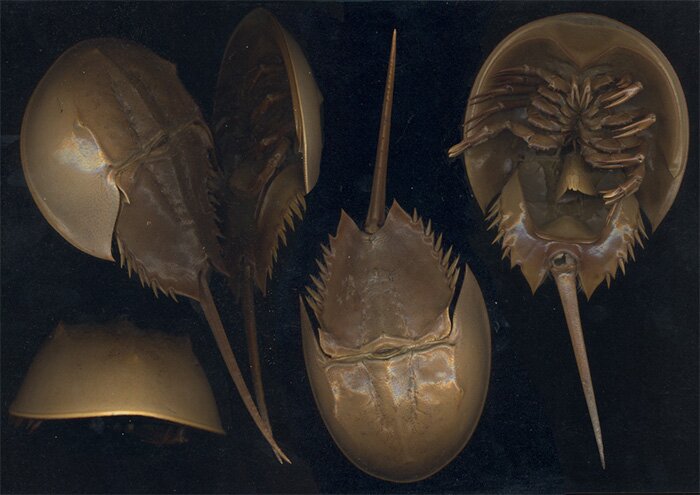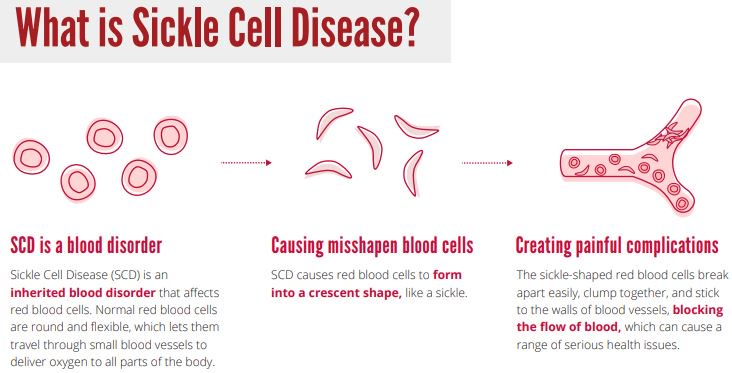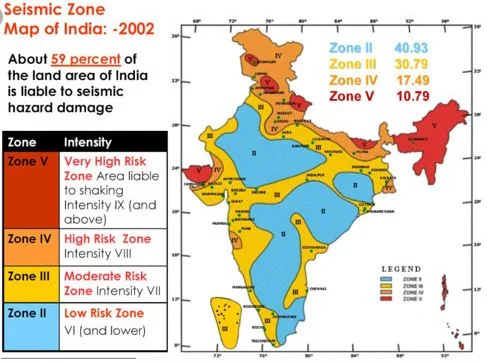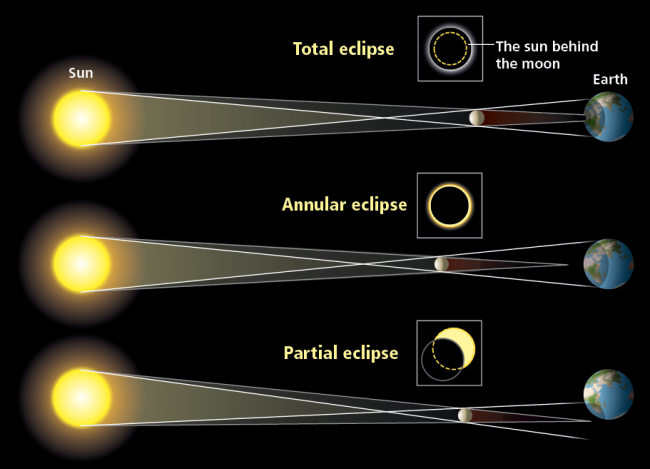Tariff Exemption on Bangladesh Exports: China
Why in News
Recently, China has announced tariff exemption for 97% of exports from Bangladesh.
Key Points
- Background: Bangladesh had written to China to exempt its export items from tariffs in the background of the economic hardship triggered by the Covid-19 pandemic.
- The Latest Move:
- China considered Bangladesh's request and has granted the tariff exemption to Bangladesh on account of its Least Developed Countries (LDCs) status.
- The Chinese move has been described as a major success in the China-Bangladesh relationship.
- Benefits to Bangladesh:
- The move will help Bangladesh to remove the economic impact of the pandemic and also emerge as a possible beneficiary alongside Vietnam and Chile of the U.S.-China trade war.
- The supply chain disruption caused by the U.S.-China trade war is likely to be filled by a boost in export of tariff-exempted goods from Bangladesh.
- It will also help Bangladesh to reduce its trade deficit with China.
- As a result of the latest announcement, a total of 8256 goods from Bangladesh will be exempted of Chinese tariffs.
- Earlier, Bangladesh used to receive tariff-exemption for 3095 items under the Asia Pacific Trade Agreement (APTA).
- The move will help Bangladesh to remove the economic impact of the pandemic and also emerge as a possible beneficiary alongside Vietnam and Chile of the U.S.-China trade war.
- Concerns for India:
- China’s heavy investment in India’s neighbourhood has increased its dominance in the Indian Ocean.
- Despite having cultural and historical relations with India, its neighbours are siding with China on diplomatic issues.
- Nepal is redrawing its map to include some Indian territories, presumably under a nudge from China.
- Earlier, Maldives and Sri Lanka have also expressed anti-India sentiment under the influence of China.
Asia Pacific Trade Agreement
- Asia Pacific Trade Agreement (APTA), previously the Bangkok Agreement, is a preferential tariff arrangement that aims at promoting intra-regional trade through the exchange of mutually agreed concessions by member countries.
- Its current Members are Bangladesh, China, India, Republic of Korea, Lao PDR and Sri Lanka.
Least Developed Countries
- LDCs are low-income countries designated by the United Nations, confronting severe structural impediments to sustainable development.
- They are highly vulnerable to economic and environmental shocks and have low levels of human assets.
India-China Rivalry and Bangladesh
- Bangladesh has benefitted from the India-China rivalry. It has used the rivalry to increase its investment and strengthen its security.
- Trade:
- In 2015, China became Bangladesh’s top trading partner, knocking India out of the position it had held for 40 years.
- As a member of China’s Belt and Road Initiative, Bangladesh has seen an influx of Chinese investment in recent times.
- To counter Chinese dominance in Bangladesh, India announced $5 billion in loans for Bangladesh in 2017, which is the largest amount ever invested by India in Bangladesh.
- Security:
- China has become Bangladesh’s top source for arms imports; and Bangladesh likewise is China’s second-largest arms export destination in the world, behind Pakistan.
- Most recently, in 2017 the Bangladesh Navy took delivery of two Chinese submarines at a minimum price.
- To counter this, India has expressed its interest in offering submarine training for the Bangladesh Navy.
Issues in India-Bangladesh Relation
- India’s hegemonic posture and coercive tactics has created deep resentment among ordinary Bangladeshis, especially when contrasted with China’s model of noninterference in domestic affairs along with lavish spending.
- India’s domestic policy on the National Register Citizens (NRC) and the Citizenship Amendment Act (CAA), both of which directly impact Bangladesh, has generated some unpleasantness in the relationship.
Way Forward
- India must keep up the partnership with Bangladesh that allows for economic growth and improved developmental parameters for both countries.
- India and Bangladesh share a great relationship, areas of concern remain, which need to be looked into holistically and resolved as soon as possible so that “best of the best” of ties between the two neighbours can be sustained forever.
- India’s neighborhood first policy can help in competing with China for influence in the neighbourhood.
Financial Action Task Force
Why in News
Recently, India has attended the virtual 32nd special Eurasian Group on Combating Money Laundering and Financing of Terrorism (EAG) plenary meeting, under the aegis of the Financial Action Task Force.
- Officials of National Investigation Agency (NIA), Enforcement agencies submitted details on terror-funding.
- The FATF's virtual plenary meet is scheduled to be held on 24th June 2020.
EAG
- It is a regional body comprising nine countries: India, Russia, China, Kazakhstan, Kyrgyzstan, Tajikistan, Turkmenistan, Uzbekistan and Belarus.
- It is an associate member of the FATF.
Financial Action Task Force
- The Financial Action Task Force (FATF) is an inter-governmental body established in 1989 during the G7 Summit in Paris.
- The objectives of the FATF are to set standards and promote effective implementation of legal, regulatory and operational measures for combating money laundering, terrorist financing and other related threats to the integrity of the international financial system.
- Its Secretariat is located at the Organisation for Economic Cooperation and Development (OECD) headquarters in Paris.
- Member Countries: it consists of thirty-seven member jurisdictions.
- India is one of the members.
- FATF has two lists:
- Grey List: Countries that are considered safe haven for supporting terror funding and money laundering are put in the FATF grey list. This inclusion serves as a warning to the country that it may enter the blacklist.
- Black List: Countries known as Non-Cooperative Countries or Territories (NCCTs) are put in the blacklist. These countries support terror funding and money laundering activities. The FATF revises the blacklist regularly, adding or deleting entries.
- The FATF Plenary is the decision making body of the FATF. It meets three times per year.
Key Points
- FATF’S View on Crime amid Covid-19:
- The FATF which is actively monitoring the impact of the pandemic on measures to combat illicit financing, released a paper on “Covid-19-related Money Laundering and Terrorist Financing Risks and Policy Responses”.
- It observed an increase in the Covid-19 related crimes, including fraud, cyber-crime, misdirection or exploitation of government funds or international finance assistance.
- India and FATF:
- Ahead of the crucial meet on 24th June, India plans to share more evidence with the key FATF members on the narco-terror cases linked to Pakistan-based syndicates, through which funds are allegedly being supplied to the terrorists operating in Jammu and Kashmir.
- The Enforcement Directorate and the National Investigation Agency have been probing several such cases.
- Status of Pakistan:
- Pakistan, which continues to remain on the “grey list” of FATF, had earlier been given the deadline till the June 2020 to ensure compliance with the 27-point action plan against terror funding networks and money laundering syndicates, or face “black listing”.
- However, owing to the Covid-19 pandemic, the deadline has been shifted to October 2020.
World Sickle Cell Day 2020
Why in News
Recently, World Sickle Cell Day 2020 was observed in India to increase awareness about the Sickle Cell Disease (SCD) at the national level.
- The day is recognised by the United Nations and celebrated every year on 19th June.
- The United Nations General Assembly adopted a resolution recognising sickle cell disease as a public health problem on 22th December, 2008.
Key Points
- Sickle Cell Disease
-
- It is an inherited blood disease which is most common among people of African, Arabian and Indian origin.
- It is a group of disorders that affects hemoglobin, the molecule in red blood cells that delivers oxygen to cells throughout the body.
- People with this disease have atypical hemoglobin molecules called hemoglobin S, which can distort red blood cells into a sickle, or crescent shape. This blocks blood flow and oxygen from reaching all parts of the body.
- Symptoms: It can cause severe pain, referred to as sickle cell crises. Infections and fatigue are other symptoms.
- People with sickle cell disorders are also at a risk of complications such as stroke, acute chest syndrome, blindness, bone damage, etc.
- Over time, people with sickle cell disorders can experience damage to organs including the liver, kidney, lungs, heart and spleen. Death can also result from complications of the disorder.
- Treatment: Medication, blood transfusions and rarely a bone-marrow transplant.
- Related Data:
- According to Global Burden of Disease (GBD)—a global research programme that estimates mortality and burden from major diseases across the globe— the prevalence and incidence of sickle cell disease in India in 2017 and 2018 was 1,104,634 and 195,166, respectively.
- The disease in India occurs predominantly in eastern Gujarat, Maharashtra, Madhya Pradesh, Chhattisgarh, western Odisha and in pockets of the Nilgiri Hills in north Tamil Nadu and Kerala.
- The disease is prevalent among tribal communities (including children).
- Challenges:
- Social Stigma: It reduces the effectiveness of screening programmes as people don’t want to go to health authorities.
- Prevalence among Tribal Population: Access to care for SCD in the tribal regions of India is limited.
- School Drop Out: Children with sickle cell disease often have to drop out from school.
- Policy Issue: The delayed implementation of the 2018 draft policy on haemoglobinopathies.
- The policy aims to provide evidence-based treatment for patients and reduce the number of new-born children with sickle cell disease through initiatives such as the Sickle Cell Anaemia Control Program, screening and prenatal diagnosis.
- Initiatives by India:
- Initiative by the Ministry of Tribal Affairs: In order to collect real time data and provide relevant information related to Sickle Cell, the government has launched a new portal which will act as a catalyst in creating awareness.
- The portal will have real time data through a dashboard along with registration facility, information about the disease and various government initiatives undertaken.
- The Ministry has also initiated an ‘Action Research’ project under which Yoga dependent lifestyle is promoted to reduce the complications in the patient suffering from this disease.
- Expanded Screening: Certain states, such as Chhattisgarh and Gujarat, have expanded their screening programmes from hospital to school-based screenings. Extrapolating such screening efforts and implementation strategies to other states will help map the prevalence of the disease.
- Initiative by the Ministry of Tribal Affairs: In order to collect real time data and provide relevant information related to Sickle Cell, the government has launched a new portal which will act as a catalyst in creating awareness.
Way Forward
- SCD is a health burden which not only impacts the individual’s life cycle but also impacts the economy as well.
- There is a need to take efforts so that the next generation is free from the disease.
- The industry like FICCI and other stakeholders have to come forward to improve the overall system of managing the Sickle Cell program of the government.
Earthquakes and Delhi-NCR
Why in News
Recently, the Wadia Institute of Himalayan Geology (WIHG) has observed that the recent series of tremors in the National Capital Region-Delhi (Delhi-NCR) are not unusual and are indicative of strain energy build up in the region.
- WIHG is an autonomous institute of the Department of Science and Technology.
Key Points
- An earthquake cannot be predicted and the tremors cannot be described as warnings for a big event but the possibility of a stronger and life threatening earthquake cannot be ruled out.
- The vulnerability of a region can be understood from the past seismicity, calculation of strain budget, mapping of active faults etc.
- Sometimes, a vulnerable zone remains quiet, experiences small magnitude earthquakes that do not indicate any bigger earthquake or receives a sudden jolt by a big earthquake without any call.
- The Delhi-NCR has been identified as the second highest seismic hazard zone (Zone IV) but the recent events in Delhi-NCR cannot be defined as the foreshocks.
- Foreshocks: All small tremors before a major earthquake in a particular region are categorized as foreshocks.
- Scientifically all these tremors in the Delhi-NCR can be demarcated as the foreshocks only after a big earthquake takes place immediately.
Reasons for Earthquakes in Delhi-NCR
- Release of Energy: Release of strain energy through the weak zones or faults which accumulates as a result of northward movement of Indian plate and its collision with the Eurasian plate.
- Movement of Plates: The Himalayan seismic belt is the region where the Indian plate collided with the Eurasian plate and under-thrusted beneath the Himalayan wedge.
- Proximity to Himalayas: Delhi-NCR is not very far from the entire north-west and north-east Himalayan belt lies in the highest seismic potential zone V and IV, where major to great earthquakes can take place.
Seismic Zones in India
- There are four seismic zones (II, III, IV, and V) in India based on scientific inputs relating to seismicity, earthquakes occurred in the past and tectonic setup of the region.
- Previously, earthquake zones were divided into five zones with respect to the severity of the earthquakes but the Bureau of Indian Standards (BIS) grouped the country into four seismic zones by unifying the first two zones.
- BIS is the official agency for publishing the seismic hazard maps and codes.
- Seismic Zone II:
- Area with minor damage earthquakes corresponding to intensities V to VI of MM scale (MM-Modified Mercalli Intensity scale).
- Seismic Zone III:
- Moderate damage corresponding to intensity VII of MM scale.
- Seismic Zone IV:
- Major damage corresponding to intensity VII and higher of MM scale.
- Seismic Zone V:
- Area determined by pro seismically of certain major fault systems and is seismically the most active region.
- Earthquake zone V is the most vulnerable to earthquakes, where historically some of the country’s most powerful shocks have occurred.
- Earthquakes with magnitudes in excess of 7.0 have occured in these areas, and have had intensities higher than IX.
Seismic Waves, Richter Scale and Mercalli scale
- Seismic waves are the vibrations from earthquakes that travel through the Earth and are recorded on instruments called seismographs.
- Seismographs record a zigzag trace that shows the varying amplitude of ground oscillations beneath the instrument.
- The earthquake events are scaled either according to the magnitude or intensity of the shock.
- The magnitude scale is known as the Richter scale. The magnitude relates to the energy released during the earthquake which is expressed in absolute numbers, 0-10.
- The intensity scale or Mercalli scale takes into account the visible damage caused by the event. The range of intensity scale is from 1-12.
Way Forward
- Earthquakes are not predictable but there lies a probability of a large to great earthquake with magnitude 6 and more in the highest seismic potential zone V and IV, which fall in the entire Himalaya and Delhi-NCR.
- The only solution to minimise the loss of lives and properties is the effective preparedness against the earthquake. Countries like Japan have proved this, where earthquakes are a common phenomenon yet the losses are negligible.
- People’s participation, cooperation and awareness are the key to success.
International Horseshoe Crab Day
Why in News
Recently, the International Union for Conservation of Nature (IUCN)’s has decided to observe the first-ever International Horseshoe Crab Day on 20th June 2020.
- The celebration of the day aims to generate greater awareness for these ancient creatures and help in their conservation.
Key Points
- Horseshoe Crab:

- It is a marine chelicerate arthropod living in shallow coastal waters on soft sandy or muddy bottom and spawns (release or deposit eggs) mostly on intertidal beaches at summer spring high tides.
- Subphylum Chelicerata is a division within the Phylum Arthropoda containing animals such as spiders, scorpions, harvestmen, mites and ticks. Like all arthropods, they have a segmented body and segmented limbs and a thick chitinous cuticle called an exoskeleton.
- Other than the marine horseshoe crabs, the Chelicerata are found primarily in terrestrial environments worldwide.
- It is regarded as a marine ‘living fossil’.
- There are four extant horseshoe crab species:
- The American horseshoe crab (Limulus polyphemus) along the eastern coast of the USA and in the Gulf of Mexico.
- The tri-spine horseshoe crab (Tachypleus tridentatus)
- The coastal horseshoe crab (Tachypleus gigas)
- The mangrove horseshoe crab (Carcinoscorpius rotundicauda)
- The last three are Indo-pacific species found in the coastal waters of India, southeast Asia, China and Japan.
- Odisha is their largest habitat in India.
- It is a marine chelicerate arthropod living in shallow coastal waters on soft sandy or muddy bottom and spawns (release or deposit eggs) mostly on intertidal beaches at summer spring high tides.
- Importance:
- They have existed since the time of the dinosaurs and are important ecosystem engineers and predators of small organisms.
- Their ecological function is to lay millions of eggs on beaches to feed shorebirds, fish and other wildlife.
- Their large hard shell serves as a microhabitat for many other species such as sponges, mud crabs, mussels and snails.
- They are a critical link to world health, biodiversity and hold cultural importance across the globe.
- Threats:
- Overharvesting for use as food, bait and biomedical testing.
- Habitat Destruction:
- Habitat loss from coastal reclamation and development.
- Shoreline alterations that are engineered to protect beaches from erosion and sea level rise due to climate change also affect their spawning habitats.
- Poachers kill them for their meat which is popularly believed to have aphrodisiac qualities.
- Trade in horseshoe crabs is rampant in many Indian states as it is believed that consumption of horseshoe crab meat can lengthen a person’s lifespan, even though there is no scientific evidence to support this.
- Its carapace (hard upper shell) is crushed and mixed with water to prepare a paste, which is applied onto scars.
- Conservation:
- It is in the Schedule IV of the Wildlife Protection Act 1972, under which the catching and killing of a horseshoe crab is an offence.
- IUCN Status:
- American horseshoe crab: Vulnerable.
- Tri-spine horseshoe crab: Endangered.
- The two other species are not listed yet.
- The crackdown on horseshoe crab poachers requires superior, inter-state coordination among police and wildlife authorities of Odisha, Bihar, Jharkhand and other states.
- The Zoological Survey of India has suggested declaring the habitat of horseshoe crabs as Eco-Sensitive Zones for their conservation and proper management.
R&D Portal for Mining: SATYABHAMA
Why in News
The Ministry of Mines has launched a portal "SATYABHAMA (Science and Technology Yojana for Atmanirbhar Bharat in Mining Advancement)" with an aim to promote research and development in the mining and minerals sector.
Key Points
- The Portal has been launched to increase efficiency and effectiveness of the Science and Technology Programme Scheme.
- Under the Science and Technology Programme Scheme, the Ministry of Mines promotes research in applied geosciences, mineral exploration, mining and allied areas, mineral processing, optimum utilization and conservation of the mineral resources of the country.
- The Ministry of Mines provides funds to Academic institutions, universities, national institutes and R&D institutions recognized with the Department of Scientific and Industrial Research (under the Ministry of Science & Technology) for implementing R&D projects.
- This portal will allow online submission of project proposals along with monitoring of the same and utilisation of funds.
- The portal has been designed, developed and implemented by the National Informatics Centre (NIC).
- The portal is also integrated with NGO Darpan Portal of NITI Aayog.
- NGO-DARPAN is a platform that provides space for interface between Non-Government organizations (NGOs)/Voluntary Organizations (VOs) in the country and key Government Ministries/Departments/Government Bodies.
- it is an e-governance application offered by NITI Aayog to electronically maintain data and transparency regarding NGOs/VOs in the country.
- The NGO-DARPAN was earlier maintained by erstwhile Planning Commission, which has been replaced by the NITI Aayog w.e.f. 1st January, 2015.
Annular Solar Eclipse
Why in News
India will witness an annular solar eclipse on 21th June, 2020.
Key Points
- A solar eclipse occurs when the moon passes between the sun and the earth. When this happens, the moon blocks the light of the sun from reaching the earth. The shadow of the moon is then cast on the earth.
- There are three types of solar eclipses:
- Partial solar eclipse: When the sun, moon and earth are not exactly lined up.
- Total solar eclipse: When the sun, moon and earth must be in a direct line.
- Annular solar eclipse: It is a particular type of total solar eclipse. It occurs when the sun, moon and earth are not only in a straight line but also in the same plane.
- The moon also must be farther away from the earth, which will allow it to not cover the disc of the sun completely, resulting in a narrow band of light around the dark colour of the moon causing the ring of fire to be visible.
- Therefore, It is also called the ring of fire eclipse.
- The distance between the earth and the moon at the moment of the eclipse can dictate the type of eclipse that will take place.
- The distance between the earth and the moon is always changing due to the egg-shaped elliptical orbit of the moon.
National Institute of Public Finance and Policy
Why in News
Urjit Patel has been appointed chairman of the National Institute of Public Finance and Policy (NIPFP). He will succeed Vijay Laxman Kelkar.
- Urjit Patel is a former Reserve Bank of India (RBI) Governor.
- NIPFP is India’s premier economic think tank - a centre for research in public economics and policies.
Key Points
- Formation: NIPFP is an autonomous body set up jointly by the Ministry of Finance, the erstwhile Planning Commission, and several state governments. It was founded in 1976. It is registered under the Societies Registration Act, 1860.
- Functions:
- It undertakes research, policy advocacy and capacity building in areas related to public economics.
- One of the major mandates of the institute is to assist the Central, State and Local governments in formulating and reforming public policies by providing an analytical base.
- Funding: It receives an annual grant from the Ministry of Finance and various State governments. However, it maintains an independent non-government character.
- Governing Body:
- It includes the Revenue Secretary, Economic Affairs Secretary and the Chief Economic Advisor from the Union Finance Ministry and representatives from NITI Aayog, RBI and three state governments.
- It also includes three distinguished economists, members of sponsoring agencies and other invitees.
- It is involved in appointing the Chairman and the Director.
- The usual tenure of a chairman is four years, which can be extended.
- Location: New Delhi.


